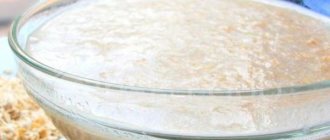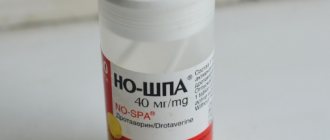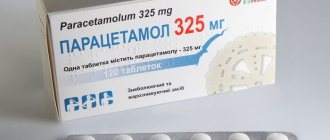Droppers for pancreatitis are prescribed if the patient has been diagnosed with an acute phase of the disease or the chronic form has worsened. IV administration of drugs gives a quick effect and allows the diseased organ to rest. The technique is carried out to quickly relieve inflammation and remove toxins. Allows you to protect other organs of the gastrointestinal tract.
Pancreatitis
What is pancreatitis?
Pancreatitis is inflammation of the pancreas. Digestive enzymes do not enter the intestines and begin to digest gland tissue - the organ destroys itself. Pancreatitis can be acute or chronic.
Causes
Pancreatitis in 90 percent of cases occurs due to alcohol abuse and gallbladder disease. May be caused by:
- diseases of the duodenum;
- damage to the abdominal cavity;
- use of certain medications;
- infectious or viral diseases;
- ascariasis;
- anatomical abnormalities of the pancreatic duct;
- impaired metabolism;
- vascular pathologies;
- genetic predisposition;
- endoscopic retrograde cholangiopancreatography.
Interesting fact! In almost 29 percent of patients with acute pancreatitis, the cause of development cannot be determined.
Characteristic manifestations
The main symptom of acute pancreatitis is very severe girdle pain in the upper abdomen. Antispasmodics and analgesics do not help relieve pain. The patient suffers from vomiting, abnormal bowel movements, and weakness. A biochemical blood test shows a 10-fold increase in alpha-amylase. On ultrasound it is manifested by changes in shape, uneven edges, and cysts.
Chronic pancreatitis is accompanied by constant pain that occurs in the epigastric region and is felt in the back. The pain is girdle-like and intensifies if the patient lies on his back. They subside if you lean forward a little. Discomfort increases quickly within an hour after eating. Sometimes the pain can be confused with angina.
Another unpleasant symptom of pancreatitis is diarrhea. The feces become mushy and may contain undigested food. The amount of feces increases. They have an unpleasant odor, a gray tint, a greasy appearance, and are difficult to wash off from the surface of the toilet walls.
Note! At the same time, the patient may suffer from belching, nausea, occasional vomiting, flatulence, lack of appetite, and weight loss rapidly.
Anti-inflammatory
It is not enough to relieve pain. Inflammation of the pancreas must be treated, and the sooner this is done, the less likely complications will arise. It is worth noting that pancreatitis can damage not only the gland, but also other organs: kidneys, heart.
Treatment with anti-inflammatory drips is carried out only in a hospital. Depending on the stage of the disease, age and health status of the patient, the dose of drugs is adjusted. For example, acute pancreatitis that occurs for the first time is treated with more “aggressive” medications than an exacerbation of a chronic disease.
What IVs are used for pancreatitis?
Due to pancreatitis, the gland begins to produce less enzymes that ensure proper digestion of food. The patient begins to suffer:
- attacks of nausea, vomiting;
- loose stools;
- feeling of heaviness;
- bloating;
- flatulence;
- pain of varying intensity.
The gradual accumulation of toxins increases weakness, headaches, and dizziness. The use of a dropper involves:
- relief of the inflammatory process;
- relief of adverse symptoms;
- providing the pancreas with proper rest;
- removing harmful, toxic accumulations from the body;
- restoration of proper functioning.
Treatment of the disease is carried out in a hospital. The duration of use of droppers depends on the patient’s body, well-being, age, and immune status.
Interesting fact! For the treatment of pancreatitis, three types of droppers with different operating principles have been developed.
IV
Painkiller drip
If the patient experiences severe pain, you should urgently call a doctor. Self-administration of painkillers is prohibited, as it will negatively affect the clinical picture. When the doctor examines the patient, a painkiller will be administered intravenously. The patient feels relief within five minutes. If you do not call a doctor, the patient will experience a painful shock, which will lead to disruption of the functionality of the cardiovascular system and a decrease in blood pressure. The likelihood of death is high.
Anti-inflammatory dropper
Due to improper functioning of the pancreas, it begins to produce a large amount of enzymes. In the body of a healthy person they begin to work, entering the large intestine. In a patient with pancreatitis, enzymes begin to digest the mucous membrane, leading to the development of inflammation and unpleasant symptoms.
Anti-inflammatory medications help:
- stop inflammation;
- relieve pain syndrome;
- remove swelling of tissues;
- stabilize cellular nutrition;
- reduce the activity of the pancreas.
First, the patient is administered the maximum dose of medications, then gradually reduced. When diagnosing acute pancreatitis, a larger dose is administered than during exacerbation of chronic pancreatitis.
Once in the blood, the active components of the drug are distributed throughout the body and “settle” in problem areas. The therapeutic effect manifests itself quickly, the inflammation goes away within a few days. But the procedure may cause side effects. It is prohibited to insert an IV on your own.
Support IV
To treat acute pancreatitis, fasting is used - it helps to reduce the production of enzymes and reduce the load on the entire gastrointestinal tract. The body begins to intensively engage in tissue restoration. Therapeutic fasting is prescribed for 3-5 days. The body needs to be provided with water and nutrients. If this is not done, fasting will lead to the development of incredible weakness. The body will not have the resources to fight the disease.
There are several types of maintenance IVs. With the help of glucose, they maintain the body’s energy potential, saline protects against dehydration, and vitamins enrich the body with essential microelements. The patient's health is slowly improving. After a five-day hunger strike, he can eat little by little.
Painkiller drips
During an attack of pancreatitis, the patient experiences pain in the upper abdomen, so severe that a painful shock may occur, which will negatively affect the functioning of the cardiovascular system. Intravenous administration of painkillers quickly and beneficially affects the patient's condition. It should be noted that you cannot take any painkillers on your own until the ambulance arrives. This negatively affects test results. Droppers for exacerbation of pancreatitis to relieve pain are prescribed by the doctor after making a diagnosis. For this purpose, “No-shpu”, “Ketorol”, “Baralgin” are used.
How long does the course last?
The duration of use of droppers depends on the individual characteristics of the patient’s body, his age, the presence of complications/other diseases, general condition and stage of development of pancreatitis. If the patient has a high risk of complications, he is given a drip every 1 or 2 days for 1-6 months. This group of patients is represented by people:
- alcohol dependent;
- elderly;
- with a risk of diabetes mellitus or cancer pathologies;
- with concomitant diseases.
If the patient quickly improves, stop taking medications 7 days after the attack. To consolidate the positive effect, the patient needs to follow a strict diet for some time, then you can smoothly switch to proper nutrition.
How not to treat osteochondrosis
We initially want to discourage some treatments, but the patient must always choose their own healing path. The medical services market is so replete with loud advertisements that you can come across a lot of nonsense that simply does not fit into the head of a sane person. This is especially true for the newfangled methods of treatment with “drill”, “hydrogen peroxide” or the “hanging on a hanger” method. We sincerely hope that fate saved you from this. Be careful before you subject your back to this new experiment!
Contrary to popular belief, practice has shown that physical therapy exercises do not always lead to recovery, and even, on the contrary, provoke new problems. An incorrectly selected complex or excessive load increases the manifestations of osteochondrosis, and the patient receives nothing but pain and complications. People involved in professional sports have even greater problems with the spine. In everyday life there must be constant, but necessarily standardized physical activity.
Perhaps you have not yet heard about the previously described methods, but the first thing you did was go to the hospital, where you were offered a course of IVs or injections.
Drug therapy is one of the most common, but no matter how much one would like it, there is still no such drug that could cure osteochondrosis, scoliosis or intervertebral hernia, and most likely there never will be. Theoretically, this is not even possible, and everything that they can prescribe to you in the hospital under the guise of IVs and injections acts as a distracting and pain-relieving therapy. It just so happens that the spine cannot be cured with medications, it’s the same as hoping for a “miracle”, but this does not happen. There are often nonsense in the instructions for the drug, where it is written in black and white “removes salts from the spine” or “promotes the removal of salts from the back,” etc. So we get ineffective treatment. Osteochondrosis itself implies a deterioration in metabolic processes, and no matter how we try to stuff the body with chemical compounds, there will be no result. It's like carrying water in a sieve or pumping up a broken tire. Medicines can only temporarily relieve pain.
Conventional massage, promoted in many medical centers as a universal method, does not produce results for longer than 1-2 days; treatment is necessary, not “kneading.”
You should approach “counter” manual therapy, chiropractic care, “disc realignment”, etc. with even greater caution; at best, this will not give any result; at worst, you will end up in a wheelchair. Any medical procedure must have appropriate medical training, conditions for implementation and, most importantly, enormous practical experience. It is worth clearly distinguishing between the manual therapy that your “neighbor massage therapist” can offer you and that used by a qualified specialist.
Contrary to many claims, spa treatment has not been proven effective. This can be explained at least by the fact that almost all patients experience one or another exacerbation during such a “rest”. Medicine does not imply enduring pain, therefore, we can talk about the ineffectiveness of the method.
Various applicators, patches, massagers, needle plates , etc. have a distracting effect and instead of treating his spine, the patient engages in absolutely meaningless actions, wasting precious time. Considering the anatomy of the spine, it remains unclear how such devices, at least theoretically, can affect the affected intervertebral discs. Of course, if you stick a patch on your lower back and remember what should help and behave carefully, then the pain should logically decrease due to correct behavior and lack of stress, but no more.
Homeopathy and similar methods still do not have a scientific basis, and various “Boards”, etc. cannot be used for serious diseases of the spine.
And finally, one of the big questions remains - spinal traction. From time to time, patients come to us who insist on spinal traction, Gisson loop and the use of other devices. These methods are widespread in various sanatoriums, orthopedic centers, and some hospitals, but are completely excluded from the services we provide. It would seem that the method could theoretically help, but at first it seems so to half of the patients. But, unfortunately, such tractions, whether on land or in water, not only do not help, but also worsen the condition of the spine. If today a patient undergoes a procedure with one hernia, then tomorrow he should look for a whole cascade of hernias. This is one of the most dangerous methods of treatment, since when the spine is stretched, not only the “problem” area is stretched, but also all neighboring vertebrae, microcracks and instability are formed, weakened ligaments are stretched, etc. All these injuries will sooner or later lead to a wheelchair. Confirmation of these words can be seen already six months after the procedure, in a series of MRI images.
- Author's technique
- Reflexology according to Ignatiev
- Manual therapy
- Manual pediatrics (using the Ignatiev method)
- Vertebrology
- Chiropractic – visceral, structural
- Osteopathy
- Spine correction
- Spine treatment
- Therapeutic exercises (author Ignatiev)
- Aesthetic modeling
KDI Kiev (left bank, Osokorki metro station, Poznyaki); Moscow city; Marbella. © 2020. All Rights Reserved. Before using the site, read the Site Terms of Use. If you have (dull, very strong, sharp) back pain on the right/left, it appeared after sleep (at night) or during pregnancy - make an appointment with a doctor.
Groups of drugs used for treatment
Osteochondrosis is a disease of the spine that occurs due to degenerative processes occurring in the intervertebral discs. Inflammation of the soft tissue occurs around the damaged disc, which leads to compression of the nerve roots extending from the spinal cord and the appearance of pain. Prolonged pain syndrome exhausts the patient physically and mentally. Due to back and neck pain, the patient may become unable to work, the quality of life will significantly deteriorate, and motor activity may suffer.
There are no drugs yet that can cure osteochondrosis, but modern medicine has medications that can reduce inflammation, eliminate pain, improve metabolism and in some way promote the regeneration (restoration) of cartilage tissue. Let's consider the most popular groups of drugs used to treat osteochondrosis.
Nonsteroidal anti-inflammatory drugs (NSAIDs) have a pronounced anti-inflammatory and analgesic effect. NSAIDs block the inflammatory enzyme cyclooxygenase (COX). In the human body, this enzyme is found in two versions: COX-1 and COX-2.
The enzyme COX-1 is involved in the synthesis of biological substances that play an important role in the functioning of internal organs (dilation of blood vessels in the mucous membrane of the duodenum and stomach, as a protective mechanism against the aggressive effects of enzymes and hydrochloric acid in gastric juice), and COX-2 is responsible for the production of mediators inflammation and pain in damaged tissues. Many NSAIDs used to treat osteochondrosis block COX-1 and COX-2 equally, which, with long-term use, can lead to damage to the mucous membrane of the duodenum and stomach.
NSAIDs are divided into two groups:
- Non-selective - block both types of enzymes COX-1 and COX-2 (diclofenac, ibuprofen, indomethacin). Contraindicated in patients with peptic ulcer disease, erosive gastritis, during pregnancy and lactation, as well as in children under 6 years of age (except ibuprofen).
- Selective - this is a new generation of NSAIDs that block mainly the COX-2 enzyme (celecoxide, meloxicam, nimesulide). Selective NSAIDs are contraindicated in pregnant women, lactating women, children and adolescents, as well as in patients with peptic ulcer disease in the acute stage.
- weakness and fatigue;
NSAIDs must be taken strictly as prescribed by your doctor, following the dosages specified in the prescription. The optimal course of taking over-the-counter NSAIDs is 1 week. The medicine is taken immediately after meals (not on an empty stomach).
Drugs in this group are prescribed in the form of tablets, can be injected (usually intramuscularly) or used topically (in the form of ointments, creams, gels).
Muscle relaxants – have a sedative and analgesic effect, reduce muscle spasms and inhibit spinal reflexes. Centrally acting muscle relaxants (tizanidine, tolperisone, baclofen) are used to treat osteochondrosis. Taking muscle relaxants helps to increase the effectiveness of conservative therapy (massage, therapeutic exercises, manual therapy).
- decreased concentration;
- lowering blood pressure;
- constipation or diarrhea;
- emotional disturbances (depression, apathy, euphoria, irritability).
— chronic liver and kidney failure;
- pregnancy or lactation;
- hypersensitivity to drugs of this group.
Muscle relaxants are used strictly as prescribed by a doctor and under his supervision in short courses.
Non-narcotic analgesics are used to relieve pain (baralgin, pentalgin, tempalgin) orally in tablet form, by injection (intramuscular or intravenous), and also rectally in the form of suppositories.
Narcotic analgesics are prescribed to relieve severe pain when other painkillers (tramadol) do not help. The drugs are released only with special prescriptions.
Chondroprotectors – regulate metabolism in cartilage tissue, stop the process of destruction in bone and cartilage tissues.
- drugs for oral administration (structum, dona, teraflex) - are prescribed for a long period of 3 to 6 months, and the first results become noticeable after 3 months of use. A sustainable effect can be achieved only after six months. The drugs have virtually no side effects.
- injectable drugs - cause the formation and accumulation of new cartilage cells, which helps improve joint mobility. The drug agent is injected into a joint or muscle.
Treatment of osteochondrosis with chondroprotectors must begin in the early stages of the disease, when the destruction of cartilage has not gone too far. The drug regimen and dosage are selected by the attending physician. The course of treatment should be repeated 2 times a year to maintain the achieved effect.
Steroid drugs have a strong anti-inflammatory effect.
Steroids are injected into the epidural space (the area between the spinal cord and the spinal canal) to relieve severe pain, most often in the lumbosacral region. Injections are performed by a qualified specialist and in order to avoid various side effects, the course of treatment with steroids is 1-3 injections. Also, according to indications, it is possible to perform intramuscular injections of steroid drugs (prednisolone, diprospan).
Biostimulants - activate metabolic and restoration processes in the affected area of the spinal cord, have an anti-inflammatory effect (aloe extract, humisol, placenta extract). The course of treatment with biostimulants ranges from 8-10 to 35 days, depending on the prescribed drug.
Psychotropic drugs are used in complex therapy to relieve pain, as they enhance the effect of analgesics and cause muscle relaxation.
- antidepressants (amitriptyline, Prozac);
- neuroleptics (aminazine, haloperidol);
- tranquilizers (phenazepam, diazepam, carbamazepine).
The drugs are available with a prescription.
Vitamins improve metabolism, saturate the body with components necessary for life, have a beneficial effect on the nervous system, have an antioxidant effect, and strengthen the immune system.
— B vitamins – reduce pain, restore tissue sensitivity (B1 – thiamine, B6 – pyridoxine, B12 – cyanocobalamin); used in tablet form or by injection. The most popular is considered a complex preparation containing all B vitamins - Milgamma (combilipen).
— Vitamin D and calcium – help strengthen the ligamentous apparatus and restore bone density. Complex preparations of vitamin D and calcium are used, for example, Calcium D3 - Nycomed, alfacalcidol.
— Vitamins A and E – help speed up the recovery process and are strong antioxidants (prevent further damage to the intervertebral disc tissue). Complex drug: “Aevit9raquo;
When choosing a treatment that corresponds to the characteristics of the disease, the doctor may prescribe a specific group of vitamins or multivitamin preparations (duovit, neuromultivit, pentovit). The course of treatment with vitamins is 1 month and is repeated 2 times a year.
Do not use medications without a doctor's prescription
Articles about medications used for osteochondrosis
Medical research regarding drugs prescribed for the treatment of osteochondrosis
News feed Spinet.ru
- 23.11 What foods will help in the fight against rheumatoid arthritis
- 13.11 Air pollution may cause bone fractures due to osteoporosis
- 07.11 Bones affect appetite and metabolism
- 02.11 Rheumatoid arthritis can cause chronic obstructive pulmonary disease (COPD)
- 30.10 Hair loss depends on the season
Latest topics in the forum:
- DIAGNOSTICS
- Diagnosis of osteochondrosis
- Selecting a method
- Inspection
- MRI
- CT
- EMGElectromyography
- Radiography
- Functional diagnostics
- Clinical examination methods
- Problems of diagnosis and rehabilitation
- TREATMENT
- Treatment of osteochondrosis
- Operation
- Medications
- Physiotherapy
- Kinesiotherapy
- Manual therapy
- Osteopathy
- Folk remedies
- Herbal treatment
- Hirudotherapy
- Acupuncture
- Laser therapy
- HILT therapy
- Hardware treatment
- Spinal traction
spinal health © 2003-2017
All information on the site is for informational purposes only. Do not use this information for self-medication. Possible contraindications. Be sure to consult your doctor.
Composition of droppers
What will be given to a patient with pancreatitis depends on his individual characteristics. As a rule, an infusion solution consists of several drugs with different principles of action.
- Analgesics are used to relieve pain. You can quickly eliminate pain using Acetaminophen and Analgin.
- Spasms and muscle tension are removed with antispasmodics - “No-Shpoy”, “Drotaverine”, “Papaverine”. The patient feels relief within five minutes.
- Patients with a serious condition, pain syndrome or a condition close to this are given droppers with Novocaine.
- To relieve inflammation, swelling, produce enzymes and relieve pain, the anti-inflammatory drug Gordox is used.
- You can cleanse the body and remove toxins with “Polydez” and “Hemodez”. They relieve symptoms of intoxication and improve well-being.
- If, in addition to pancreatitis, the patient has an infectious pathology or severe inflammation, the fluoroquinolones “Ofloxacin” and “Ciprofloxacin” are given to him.
- To support the body, the patient is given vitamins and minerals. To normalize the level of monosaccharides and increase energy potential, glucose is added. Sodium chloride helps prevent dehydration.
- Contrikal will help reduce the activity of the pancreas and the level of enzymes.
It is important to know! Despite the availability of equipment and medications for IVs used to treat the pancreas for pancreatitis, such a procedure is prohibited as self-medication due to the high risks of complications.
Drugs used
Depending on the degree of pain, medications of varying strengths are used for pain-relieving droppers.
Antispasmodics (papaverine, no-spa and others), analgesics (acetamifene, pentalgin and others) are used for mild pain syndrome. As a rule, these are used to treat the chronic form of the disease. During an exacerbation, droppers with potent drugs are prescribed. Eufillin is used as an antispasmodic, and diuretics (furosemide) are used to relieve tissue swelling. The droppers include novocaine and somatostatin substitutes. Narcotics for pain relief are used in severe attacks.
A common anti-inflammatory drug is paracetamol. It is important to understand that anti-inflammatory drugs are prescribed by a doctor. The composition of the anti-inflammatory dropper is formed based on many factors:
- Patient's age;
- Cause of exacerbation;
- Presence of other diseases;
- Features of the course of the disease.
Possible complications
A specialist must install the system and monitor the administration of medications. Sometimes the procedure can cause the following complications:
- Allergy to the administered medication. Then the treatment is stopped, the composition of the solution is changed.
- Hematoma or bruise. It is considered a minor side effect and does not require any special action. To protect the tissue from injury, vasofix is first introduced and left until the therapeutic course is completed.
- Blistering of tissue. Occurs if the needle gets into soft tissue and the medicine begins to flow there. This phenomenon needs to be addressed urgently.
- Air embolism. Occurs when air gets into a vein. This happens if the healthcare provider does not pull the needle out of the vein in time when the medicine runs out.
- Sepsis. This phenomenon is observed very rarely. Occurs when aseptic requirements are not observed. Blood and tissue become infected through the needle.
- Necrosis. Occurs due to the administration of a strong drug or an increase in the permissible dose.
These unpleasant phenomena can be avoided if the medical staff does their job efficiently and the IV is inserted in the medical facility.
When the procedure is contraindicated
Specifically, the treatment of pancreatitis with IVs in a hospital has no contraindications. The prohibitions apply to administered medications. The main contraindication is the patient’s intolerance to the constituent components of the medication, allergies. Especially for this, the doctor must clarify with the patient what substances provoke an allergic reaction in him. If the answer is yes, medications are selected with minimal likelihood of developing allergies. Antihistamines are also added to the infusion solution to prevent an unusual reaction.
Advice. It is forbidden to use a dropper for self-medication.
What should patients do?
The first symptoms of pancreatitis include nausea, girdle pain in the abdomen (or pain in the side). Body temperature may increase, vomiting, and diarrhea may occur. Some patients complain of shortness of breath, rapid heartbeat, and blurred vision.
Having discovered the first symptoms of pancreatitis, you need to call an ambulance as soon as possible. Before the ambulance arrives, you should not take medications, drink water or eat. It is also not allowed to place a hot heating pad on your stomach. A heating pad with ice applied to the upper abdomen will help reduce pain.
The patient’s condition can be alleviated by the “embryo” pose. This is a lying position with your knees bent.
You cannot refuse hospitalization, even if there is relief. Pancreatitis can manifest itself in different ways and the absence of pain during inflammation is just a temporary phenomenon. Also, patients often confuse diseases of the intestinal tract, mistaking pancreatitis for appendicitis, and an ulcer for pancreatitis. Therefore, examination in a hospital setting will not only be useful, but also very useful.
Pancreatitis is a common and insidious disease. How the food you eat will be digested depends on the functioning of the pancreas, which directly affects your well-being. Therefore, it is better to prevent the disease by giving preference to natural, easily digestible foods. Eliminate alcohol or minimize its consumption, give up fast food, lemonade and sausages. Eat small portions, chew each bite thoroughly. And don’t forget about water, which normalizes metabolism and prevents intestinal diseases.
Author : Karpova Alena Vladimirovna, especially for the site Zhkt.ru
Effective IVs for the treatment of pancreatitis
It is impossible to say which IV will show the best results. It depends on the general condition of the patient. The qualifications and experience of the doctor who selects the therapeutic regimen is also very important.
For acute pancreatitis
Treatment involves eliminating pain with the help of analgesics, anesthetics and antispasmodics. Then they relieve inflammation, reduce pancreatic activity, and remove toxic accumulations. They use complex systems with anti-inflammatory effects, which consist of several agents. Once intensive care is completed, the patient is placed on a bracing system to improve well-being, increase energy levels and prevent dehydration.
For chronic pancreatitis
This form of pancreatitis has a weak clinical picture and vague symptoms. Tablets and suspensions are used for treatment, but they are not very effective. To improve the patient’s condition, it is necessary to remove toxins from his body and improve immunity. This can be achieved with the help of strengthening droppers. They are usually performed in a hospital setting; sometimes they can be performed at home, but only under medical supervision.
What are IVs needed for?
Droppers have many advantages, among which the first place is occupied by the rapid penetration of the drug bypassing the gastrointestinal tract. Intravenous administration of medications gives a guaranteed positive result, and the effect of the drugs occurs instantly. Droppers for pancreatitis are the main component of treatment, so without them it is impossible to relieve inflammation.
Treatment of pancreatitis with conventional tablets is allowed only in the chronic stage of the disease. In acute cases, the patient is not even allowed to drink water, which irritates the already inflamed organ.
The drip also performs an important function - it gives the gland a rest, suppresses the production of enzymes and removes from the body those that have already been produced. At the same time, the concentration of the drug remains in the body much longer than from drugs taken orally.
What drugs are used
The means for the infusion solution are selected by the doctor. Most often this list is represented by the following names:
- "Acetaminophen". Fights pain, heat and inflammation. Prohibited for children under 12 years of age, with intolerance to the components, kidney and liver failure.
- "Analgin." Acts in the same way as Acetaminophen. It should not be prescribed to patients with blood diseases and individual intolerance.
- "No-Shpa." The antispasmodic relaxes the smooth muscles of the gastrointestinal tract and does not affect intestinal motility. Prohibited for impaired kidney and liver function.
- "Papaverine". The active component, papaverine hydrochloride, has an antispasmodic effect. The medication may cause a decrease in blood pressure, headache, nausea and weakness.
- "Novocaine". Based on procaine. It relieves pain, so it is prescribed for the development of pain syndrome. Under its influence, the sensitivity of nerve endings and the transmission of impulses decreases. Should not be prescribed to patients with hypersensitivity to the composition.
- "Gordox." Has a positive effect on blood circulation, increases the number of enzymes. Helps cure acute pancreatitis and internal bleeding.
- "Hemodez." Removes toxins and harmful substances from the body.
- "Ofloxacin." This antibiotic helps eliminate infections in the gastrointestinal tract.
- "Ciprofloxacin." Effectively fights germs.
- “Countrykal.” The medication inhibits the activity of pancreatic enzymes. Used to treat acute pancreatitis.
If the patient does not tolerate one of the medications well, an analogue is selected.
"Gordox"
What injections, injections and droppers should be given for osteochondrosis?
Injections (injections and droppers) for osteochondrosis are prescribed for severe pain that does not go away on its own. The basis of therapy for degenerative diseases is the correction of complex changes in the intervertebral discs, vascular, muscular and osteoarticular systems.
The main components of drug treatment for osteochondrosis and pain associated with it include the prescription of several groups of drugs:
- NSAIDs.
- Muscle relaxants and antispasmodics.
- B vitamins.
- Blockades with local administration of novocaine, trimecaine, bupivacaine (anesthetics), corticosteroids or NSAIDs.
- Less commonly, chondroprotectors (only in some cases) and vascular drugs in the form of infusions.
It should be remembered that currently, the diagnosis of “osteochondrosis” most often covers nonspecific back pain (for example, myofascial syndrome), arthropathy of the facet and other joints of the spine. This material does not describe how to treat compression radiculopathy due to intervertebral hernias and spinal canal stenosis. What anti-inflammatory drugs are prescribed for back pain?
Anti-inflammatory drugs are one of the most important links in the treatment of pain (reflex and muscle-tonic in cervical, thoracic, lumbar osteochondrosis).
NSAIDs and glucorticosteroids (GCS) can be used as drugs in this group.
Typically, GCS are prescribed when NSAIDs are ineffective or when the autoimmune nature of the disease is proven (for example, ankylosing spondylitis), as well as for osteoarthritis of the spinal joints in the form of periarticular injections.
However, NSAIDs are usually used as anti-inflammatory drugs during exacerbations. Among the large number of drugs in this group, the most effective and studied are the following:
- diclofenac;
- aceclofenac;
- nimesulide;
- ketoprofen;
- ketorolac;
- meloxicam;
- celecoxib.
The basic ones are usually celecoxib (trade name "Celebrex"), meloxicam ("Movalis"), nimesulide ("Nimesil", "Nise", "Nimica"). All of these drugs are available only in tablet, capsule or powder forms for oral administration.
Their effect becomes most pronounced approximately on the third day from the start of administration. Therefore, in the first 5 days (peak pain), injections such as diclofenac, ketorolac, ketoprofen can be prescribed.
Subsequently, the patient is transferred to basic medications.
How are injectable forms (shots) of NSAIDs used? To do this, see the table below.
Therefore, if patients with back pain have contraindications (chronic diseases of the stomach or duodenum, coagulation disorders), it is better not to use these drugs and immediately switch to selective ones (meloxicam, celecoxib).
The effectiveness of various NSAIDs in the treatment of pain was studied in the IMPROVE study (1), the results of which are presented in the table below. Nimesulide was not involved in this study. However, in another clinical study, nimesulide was not inferior in its effectiveness (analgesic effect and frequency of side effects) to celecoxib.
Thus, the line of NSAIDs in terms of effectiveness and safety may be as follows: meloxicam-nimesulide (celecoxib)-aceclofenac-diclofenac. It should be understood that the analgesic effect in the acute period is usually more pronounced in the injectable forms of ketorolac and diclofenac.
| Name/trade name | % of successful therapy cases |
| Meloxicam (Movalis) | 86,8 |
| Celecoxib ("Celebrex") | 62,0 |
| Diclofenac (Ortofen, Voltaren) | 42,4 |
| Ibuprofen | 38,9 |
Muscle relaxants are almost always added to the treatment regimen for pain in osteochondrosis, especially when their duration is more than 6 weeks.
Since osteochondrosis of the spine in everyday life is usually considered to be the presence of myofascial pain syndrome or other nonspecific pain, it is muscle relaxants that have their direct therapeutic effect, namely they relieve pain and relax the muscles of the back and spine. What muscle relaxants are usually prescribed for back pain?
The main muscle relaxants used for treatment are listed below:
- Mydocalm (“Tolperisone”) – has injection and tablet forms.
- Sirdalud (“Tizanil”, “Tizanidine”, “Tizalud”) is an oral drug in the form of tablets, capsules and powders.
- Baclofen - in the Russian Federation only in the form of tablets, abroad it is produced in the form of an injection form (“Gablofen”).
Muscle relaxants in the Russian Federation are predominantly in the form of tablets; in this group, only mydocalm (Tolperisone) is injectable. Mydocalm has the following features as advantages over other drugs in this group (3):
- Does not give a pronounced sedative effect.
- Does not cause muscle weakness.
Also, antispasmodics can be prescribed as injections for cervical osteochondrosis, for severe headaches and dizziness.
The main schemes for using these drugs are shown in the table below.
Quite often, B vitamins, usually complex, and nicotinic acid (PP) are prescribed as an auxiliary therapy for pain syndrome.
Some authors recognize the fact that injections of B vitamins for lumbar osteochondrosis help to significantly reduce the duration of the pain period (2), especially with a combination of tablets or injectable NSAIDs.
At the same time, the optimal effect in treatment is provided by the joint administration of vitamins B1, B6, B12, therefore the most successful form is combined drugs, for example, “Milgamma”.
The main drugs and their prescription regimens are given in the table below.
Chondroprotectors
Chondroprotectors are a rather controversial group of drugs prescribed for osteochondrosis.
Currently, their effectiveness has been studied only in relation to osteoarthritis, therefore chondroprotectors are present in treatment regimens for this disease.
The possibility of using chondroprotectors for osteochondrosis exists only when degenerative changes include osteoarthritis of the facet joints of the spine (FJ).
- "Teraflex" is an oral drug containing glucosamine hydrochloride and chondroitin sulfate.
- “Dona” contains glucosamine sulfate as the main active ingredient.
- “Structum” – the main active ingredient is chondroitin sulfate.
- "Alflutop" - contains a concentrate from different types of fish (chondroitin sulfate), amino acids, etc.
- "Chondrolone".
- "Chondroguard."
As studies on this group of drugs show, the best way to use them for osteoarthritis of the spinal joints is paravertebral and periarticular (i.e., near the spine and the joints themselves). Oral administration and intramuscular injections (injections for lumbar and thoracic osteochondrosis) are less effective.
Possible application schemes according to the authors are shown in the table below.
| Name | Method of administration | Treatment regimen, what to expect from use |
| "Alflutop" (1 percent, 1 ml) | Intramuscular, paraarticular | 1 ml once a day, course – 20 days, can be combined with oral medications |
| "Dona" (0.4 g in 2 ml and solvent ampoule) | Intramuscularly, paraarticularly after diluting the contents of the ampoule with a solvent | 3 times a week, duration 1-1.5 months, can be combined with oral medications. Reduces pain, slightly increases mobility in affected joints, slows down the progression of arthrosis |
| "Structum" (0.1 g in amp. and solvent ampoule) | Intramuscularly, paraarticularly after dilution in a solvent | Inject 100 mg every other day, with the 4th injection 200 mg, a total of 25-35 per course. Repeated course after 6 months. Combined with oral medications. Somewhat reduces pain and increases mobility in affected joints |
Despite the fact that droppers for osteochondrosis are not a mandatory component of treatment and are usually not present in the standards of therapy, they are quite often prescribed in medical practice.
Most often it is performed when there are problems in the cervical spine, accompanied by dizziness and headaches. In addition, vasoactive drugs are indicated for compression radiculopathy, but its treatment is not discussed here.
Among the main vascular drugs that are prescribed in the form of infusions and injections for osteochondrosis of the cervical spine, we can highlight:
- Pentoxifylline (Trental).
- Actovegin.
- Berlition.
- Xanthinol nicotinate or sodium nicotinate (nicotinic acid).
I would like to note that these drugs for the most part belong to medications with unproven effectiveness.
Trental (or the cheaper pentoxifylline), as well as nicotinic acid and its salts, have a vasodilating effect, mainly of peripheral vessels (limbs, brain), which is why they are prescribed for symptoms of vascular pathology, sometimes accompanying degenerative processes in the cervical spine.
It should be remembered that currently, the diagnosis of “osteochondrosis” most often covers nonspecific back pain (for example, myofascial syndrome), arthropathy of the facet and other joints of the spine. This material does not describe how to treat compression radiculopathy due to intervertebral hernias and spinal canal stenosis. What anti-inflammatory drugs are prescribed for back pain?
What patients say
When pancreatitis worsens, I inject myself with medications into a vein or muscle. To do this, I mix sodium chloride, Analgin, Papaverine and Spazialgin. The main goal is to relieve pain. This makes almost 6 cubes of solution. I inject into the buttock or into a vein. The effect occurs within 10 minutes.
Victor, 43 years old
My wife is a doctor by training, so she treats exacerbation of pancreatitis on her own with the help of a drip. The solution is the same as in the hospital. The result is always good. Besides the IVs, I follow a diet and try not to get nervous.
Andrey, 56 years old
"Kontrikal"











